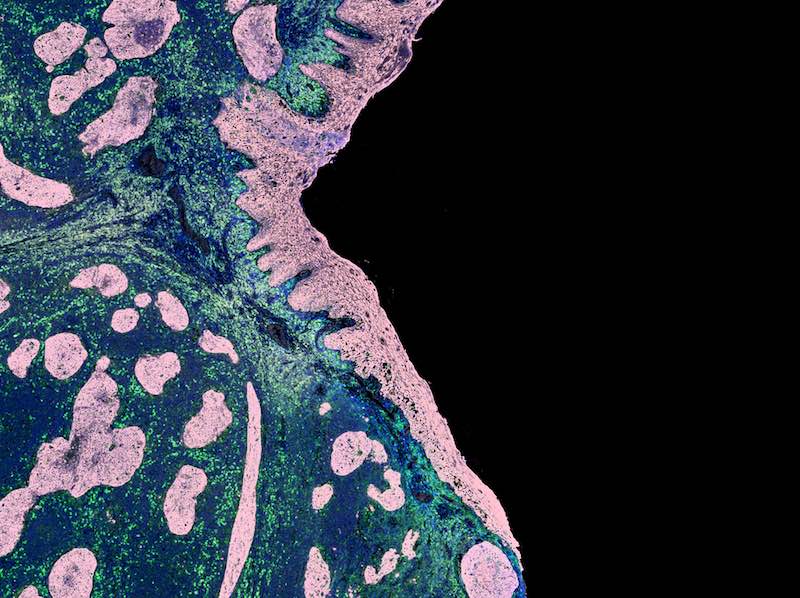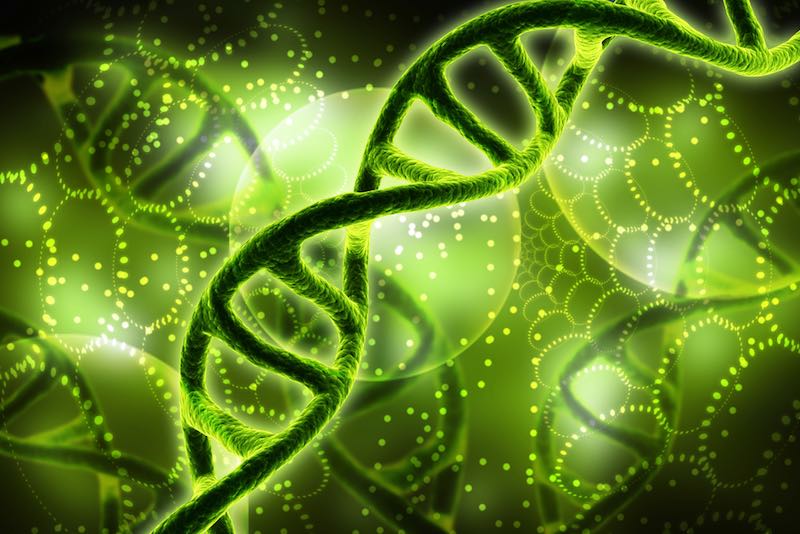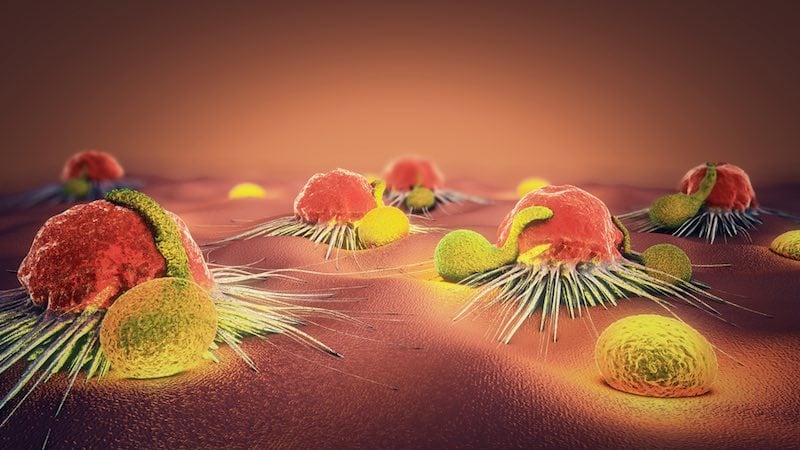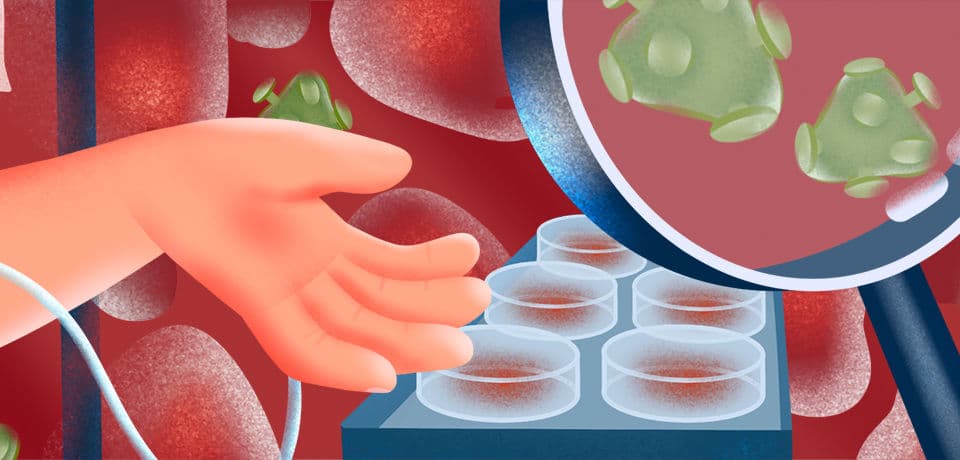Newsletter Signup - Under Article / In Page
"*" indicates required fields
Until recently, cancer detection depended on invasive solid tissue sampling that didn’t provide a complete picture. An emerging crowd of biotechs is making it easier to detect and monitor cancer with liquid biopsies.
The notion that a person’s blood can reveal a wealth of health information looked so shiny that the infamous blood diagnostics company Theranos was valued at $9 billion at its peak in 2014. However, the company’s technology — touted to deliver reliable blood tests using just a few drops of blood — was later exposed as inaccurate despite Theranos’ attempts to hide the discrepancy. This led Theranos to go defunct and founder Elizabeth Holmes to get convicted of fraud in January 2022.
Nonetheless, the potential of blood testing continues to tantalize the industry. One leading firm in the media spotlight is Grail in the U.S. The DNA sequencing behemoth Illumina announced its intention to take over Grail for $8 billion in 2020, and is battling U.S. and EU antitrust scrutiny to push the deal ahead. The prize is Grail’s liquid biopsy test called Galleri, which is designed to detect fragments of DNA that break off from the tumor and circulate in the blood.
While not yet approved by the U.S. Food and Drug Administration (FDA), the Galleri test is on sale on a limited basis and could allow doctors to screen for 50 types of cancer before symptoms arise and when they are easier to treat.
Many companies are seeing success in the field of cancer diagnostics. “Oncology leads the way in blood diagnostics,” said Ewan Hunter, chief data officer at Oxford BioDynamics. His company analyzes the impact of the environment on the genome in the form of epigenetic DNA modifications. These modifications can then be used to screen for cancer, amongst other things.
“The starting point to determine what’s possible is clinical need, and that’s currently personalizing care for people with cancer,” explained Andrew Newland, CEO of the U.K. liquid biopsy developer Angle plc. Immuno-oncology therapies work for some but not all, and they’re expensive. “We have to ensure that the right patients receive the right therapy, and the way to do that is via liquid biopsy,” he continued.
Traditionally, cancer testing is done by taking solid biopsies of tumors and screening for surface markers on tumor cells with custom designed antibodies. However, some tumor cells don’t have all the necessary surface markers that the antibodies target to give a readout. Solid biopsies also have a major limitation: they can only be taken once, making it impossible to track progression over time. This is because tumors are heterogeneous and their genetic makeup changes over time, so the second sample won’t match the first. And if that’s not reason enough, solid biopsies are also highly invasive.
Liquid biopsies, on the other hand, can be done with a routine blood draw. The technology has come so far that various tests are already on the market, including Janssen Diagnostics’ CellSearch and Roche’s cobas EGFR Mutation Test v2. These tests are at the forefront of the wave of personalized medicines.

“We’re moving towards more targeted therapies by understanding molecular mechanisms,” said Michael Kazinski, vice president, head of global product management sample technologies at the German diagnostics supplier Qiagen. And the best way to personalize a treatment in such a manner is to start with a liquid biopsy.
The molecular approach: free circulating DNA
Qiagen began in 1984 as a spinout from the Heinrich Heine University in Düsseldorf with the aim of isolating nucleic acids. This core capability has been translated into technologies that read DNA circulating outside of cells in the blood, with a primary use in prenatal and oncological applications.
In 2015, Qiagen became the first to the European lung cancer market with Therascreen, a kit able to detect sequences of tumor DNA in the blood of patients. The first approved version of Therascreen specifically tests for the presence of a protein in cancer cells called VEGFR, which would indicate a patient is eligible for AstraZeneca’s lung cancer drug Iressa. Therascreen has since become the gold standard in many labs and clinics, and other versions of the technology can also detect other blood biomarkers to guide cancer treatments.
“Liquid biopsy is nothing more than combining various technologies to identify biomarkers circulating in the blood and other body fluids, but it has the potential to revolutionize healthcare,” said Kazinski. “What makes it amazing is its sheer accessibility.” Sampling a tumor might sound simple, but some cancers like those of the brain require drilling holes into the skull.
This accessibility also makes it easier to catch the disease earlier and monitor patients and their disease progression.
“When you can see a tumor on PET scans or other imaging technologies, for example, it’s already very late in cancer progression,” explained Kazinski. “If you can identify the disease earlier, especially if it has resistant mutations, you can adapt a therapy to a patient. You can make it much more effective that way, and you can keep repeating the process to monitor the treatment’s efficacy.”
The next step for Qiagen is to continue building up its next-generation sequencing (NGS) and bioinformatics know-how. This will enable the processing of huge amounts of genetic data, allowing researchers to find correlations between genes and disease onset or progression. In addition, Qiagen has developed a full suite of solutions covering PCR and NGS-based analysis of circulating RNA, circulating tumor cells (CTCs) and exosomes.
Kazinski added that challenges of developing the technology often depend on the application, and these include obtaining sufficient tumor DNA from the blood and getting the test reimbursed by healthcare providers.

Oxford BioDynamics goes a step further than direct DNA sequence analysis by looking at regulatory genome architecture — that is, expression and silencing of genes via epigenetic mechanisms. The company’s CSO, Alexandre Akoulitchev, said that epigenetic alterations are increasingly recognized as being highly informative for patient stratification: “In many indications, particularly in oncology, we demonstrate a very high correlation between disease manifestation and the molecular regulatory systems, which are all reflected in the abnormal genome architecture.”
The company’s platform, EpiSwitch, monitors abnormal epigenetic signatures in cells from a blood sample of someone with a particular disease or pathology. Based on this, EpiSwitch can identify, validate and monitor epigenetic biomarkers known as chromosome conformation signatures that represent an individual’s state of genome regulation, including gene expression, genetic risks and even metabolic state.
“Reading the genome architecture using EpiSwitch proves to be much less noisy compared to other biomarker modalities, which include continuous ranges of readouts and stochastic noise, thus making the data hideously complicated,” explained Akoulitchev.
Oxford BioDynamics is focusing on immuno-oncology for now, although the applications of EpiSwitch are broad, with oncological, neurological and autoimmune indications all on the table. In early 2021, the firm rolled out a test to predict whether patients with COVID-19 would develop severe disease. And in February 2022, the company launched a test to help medical professionals predict whether a cancer patient would benefit from treatment with blockbuster cancer drugs called immune checkpoint inhibitors.
The cellular approach
Angle in the U.K. has developed its own test based on entire cells instead of fragments of DNA of dead cells. After six years of development, the company’s medical device was cleared by the FDA in May 2022 for the capture and harvest of CTCs from the blood of patients with metastatic breast cancer for subsequent analysis.
Metastatic breast cancer is heterogenous and requires constant monitoring to make sure the right treatments are being used. However, getting solid biopsies at the sites where the tumor spreads is highly difficult not to mention invasive. By offering the possibility of repeat biopsies, Angle’s system, called Parsortix, is widely seen as changing the game in this type of cancer.
So how does the Parsortix technology work? “Angle pioneers the collection of living cancer cells from patient blood for analysis,” said Newland. Traditionally, liquid biopsies hinge on screening fragments of DNA from dead cancer cells. However, this approach doesn’t provide any data on RNA or protein expression, which can be captured by harvesting whole cells.
Parsortix isn’t the first kit marketed to measure CTCs in metastatic breast cancer: that honor goes to CellSearch in 2013. CellSearch uses antibodies to snag cells in the blood carrying telltale chemical signs of cancer and then stains and counts the cells. However, metastatic breast cancer CTCs are diverse, and not all may carry the cancer signals looked for in CellSearch. Parsortix is designed to overcome this limitation by grabbing any large cell in the blood, including CTCs, for subsequent genetic analysis and even culturing in the lab.

In 2017, Angle acquired the diagnostics firm Axela to leverage the Canadian company’s technology of analyzing up to 100 genes simultaneously in what’s called a “sample-to-answer” process to quickly obtain a diagnosis.
“Axela’s technology has similar utility to NGS but for a much lower price,” remarked Newland. The alternative approach is to use PCR; this comes at a much lower cost but it’s limited on a practical basis to only about 8 genes per sample, which is not enough for key clinical applications. Angle’s platform can run 100 genes at a similar price to PCR.
In addition to breast cancer, Angle is experimenting with the potential of its technology in the management of patients with ovarian, prostate and small cell lung cancer.
The liquid biopsy space matures
Cancer screening technology using circulating tumor DNA in the blood is gaining momentum in the market. The liquid biopsies Guardant360 CDx and FoundationOne Liquid CDx were approved by the FDA in 2020 for tracking changes in the genome of specific types of cancer. The tests have since added more types of cancer to their indication lists, and can assist physicians in choosing which treatments to give to patients.
Meanwhile, CTC capture technology is becoming further entrenched in the liquid biopsy space. This is generating excitement as it could allow researchers to discover new biomarkers in CTCs that are good predictors of a patient’s cancer progression, particularly when using immunotherapies.
However, one of the holy grails of liquid biopsy remains catching cancer early: predicting whether someone will develop cancer way before the symptoms present themselves. The aptly-named Grail aims to apply for FDA approval of its Galleri test in 2023. However, some work needs to be done to improve Galleri’s sensitivity for early-stage cancers, according to the American Society of Clinical Oncology (ASCO).
“I think the advantage of a test like Galleri is that it can pick up some cancers for which we have no screening, such as for pancreatic cancer,” said Julie Gralow, chief medical officer and executive vice president of ASCO in a public statement. “It’s not as useful or impactful if it is mainly picking up stage IV disease, because that is already incurable for most cancers. These tests have to do better than that.”
Nonetheless, Illumina continues to fight tooth and nail to let its Grail acquisition go ahead; a sign that the sequencing giant is betting big on the potential of Grail’s testing technology.
“The merger with Illumina will get the Galleri test to people far faster. We aim to accelerate this process so the test will be available in doctors’ offices everywhere, fully reimbursed,” stated Hans Bishop, CEO of Grail. “A one-year acceleration of access to the Galleri test for the U.S. population has the potential to save 10,000 lives over a 9-year period.”
This article was originally published in October 2017 by Evelyn Warner. It has since been updated by Jonathan Smith to include the latest developments in the liquid biopsy field.
Oncology R&D trends and breakthrough innovations







